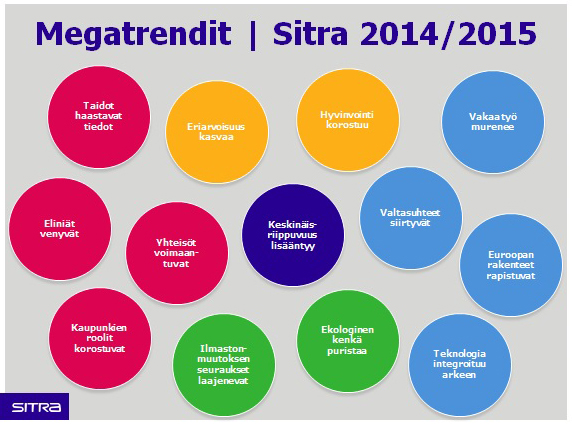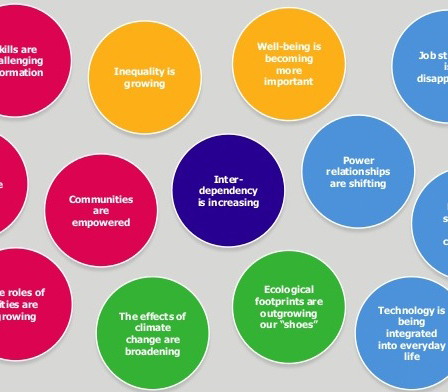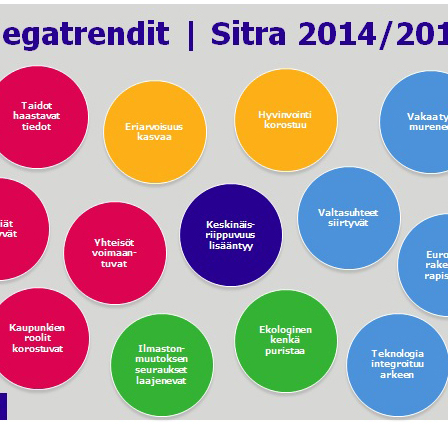This article was first published in Finnish in November 2014.
We are in the midst of a global power shift. We are not headed towards a new Cold War, but a much deeper structural change, at the core of which are Asia’s economic rise and China’s transition towards becoming a superpower.
I am writing this analysis in Taiwan, Asia. This morning, my house was shaken by a minor earthquake nearby, registering 3.2 on the Richter scale. A snap election is likely in Japan due to its slide into recession; India’s new Prime Minister Narendra Modia is feted like a rock star at Sydney Olympic Park; and Australia and China have signed a free-trade agreement abolishing import taxes on raw materials and agricultural products.
Here, in the East, the last few weeks have been turbulent times in the field of international policymaking. Within the last two weeks, two important international summits have been held here: the first being the annual meeting of APEC (Asia-Pacific Economic Cooperation), established in 1989. Hosted by the President of the People’s Republic of China Xi Jinping, the 2014 APEC summit was attended by the heads of state of 21 countries in the Asia-Pacific Region, as well as the President of the United States Barack Obama and the President of Russia Vladimir Putin.
A few days ago, we saw how the G20 Leaders’ Summit, held in Brisbane Australia, ended on a slightly more dramatic note. I say “dramatic” due to the humiliation of Russia’s Putin by representatives of some of the world’s most powerful nations, which resulted in the almost full freezing of dialogue between the Russian head of state and the rest of the world.
The global balance of power is shifting
Major changes are occurring in the traditional world order and the international relationships forged after the Second World War. We are not headed towards a new Cold War, but a much deeper structural change, at the core of which are the economic rise of Asia and China’s transition towards becoming a superpower.
An example of the ongoing change is the President of China’s declaration at the 2014 APEC Summit in Beijing of a 50 billion US dollar investment through the “Asian Infrastructure Investment Bank” (AIIB). In addition, a direct contribution of 40 billion US dollars will be made to a Silk Road Fund for reviving the historic connection, of the same name, between the East and the West. This China-centred re-mapping of the world based on the “Belt and Road” initiatives is highly intriguing – it includes plans for the introduction of a 21st-century Maritime Silk Road connecting Africa, India, Indonesia and Europe, and oil and gas pipelines cutting across Russia, Central Asia and the Middle East all the way to Asia.
In his book Monsoon: The Indian Ocean and the Future of American Power, Robert Kaplan points out that 90 per cent of international trade in goods occurs in the economic area stretching eastwards from the Middle East to the Pacific Ocean. Two thirds of the world’s oil, carbon and energy supply, as well as 60 per cent of LNG and 70 per cent of coal, is being bought and sold within that area.
It is estimated that if development trends in Asia continue at their current pace, by 2030 China and India alone will be responsible for half of all future growth in global energy needs. On that note, China’s position and role as an international player was emphasised at the APEC meeting, when it announced the conclusion of a climate agreement with the United States and the setting of a target for curbing greenhouse gas emissions by 2030.
A multipolar cultural world
Although the world’s future seems to revolve around ever-intensifying competition in the fields of finance and innovation, and over who has access and ownership rights to sources of raw materials, energy and minerals, another key factor is our transition into a world of the internet age, a multipolar world of emotions, impressions and virtual truths defined by various cultures and religions. Alongside iron and energy, states, groups and individuals are basing their personal interests and values on cultural frameworks and concepts. Our Western, Judeo-Christian values such as representative democracy, the rights of the individual and liberal pluralism are facing more strident challengers from authoritarian hierarchical states or fundamentalist organisations.
The brutal fundamentalist Islamic extremist group ISIS aims to foment war and set faith against faith, by releasing videos of extremely violent acts and spreading fear based on its medieval resolve to force its will on others – regardless of the fact that the organisation is supported by only a fraction of the world’s Muslim population. In his New York Times column in September, David Brooks wonders whether Russia’s new, more aggressive posture in Ukraine and its threat to resort to military force – an approach which has historically dumbfounded the West – can be regarded as a reaction to problems associated with Russia’s dysfunctional democratic model and economic weakness based on rewriting the narrative into a “might is right” one reminiscent of the Cold War era.
Economic prowess and competitiveness will tip the scale
Viewed from the East, global change and the way in which states and countries are competing for their future position is primarily based on their ability to compete economically and come up with new ideas, and on the strategic visions of the national leaders of the future paths we need to take.
In the coming years, the dynamics of the world economy will be reshaped even further by the entry into force of free-trade agreements between economies in East and South Asia and the Pacific Region, as Asian countries liberalise their economies. Free-trade areas are currently being created in Asia on the basis of two key processes: the first is the Regional Comprehensive Economic Partnership (RCEP) of the ASEAN countries, China, India, Japan, Australia and New Zealand, and the second is the Trans-Pacific Partnership (TPP), led by the United States. In Beijing, President Xi also suggested the establishment of a new, even more extensive free-trade area in Asia, alongside the US-led TPP area.
So what should Finland do? What is our place in the world?
I strongly believe that Finland needs to find a way to benefit from Asia’s economic growth. The shift in the balance of power towards the East is a historic process that will last several decades and have a lasting end result. The economic damage caused by the European economic crisis and the security threat posed by Russia challenge us to evaluate our future prospects as part of Europe and in the context of Europe’s future global position. The economic and political growth of Asia and the shifting of global development challenges towards the East represent a strategic, long-term challenge and an opportunity for Finland.




Recommended